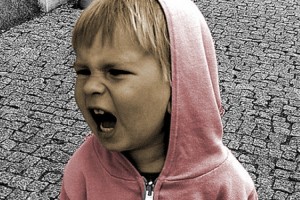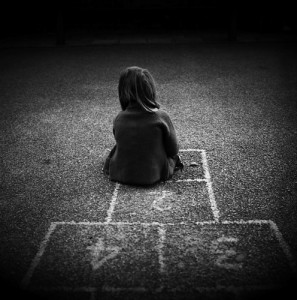
Dysregulation: A New DSM Label for Childhood Rages
With the many changes in the newest version of the Diagnostic and Statistical Manual of Mental Disorders (DSM-5), among the most significant has been the inclusion of Disruptive Mood Dysregulation Disorder (DMDD)—a direct response to the dramatic increase in the diagnosis of bipolar disorder in children and adolescents during the 1990s.
Diagnosing bipolar illness in children is considered elusive at best. Characterized by extreme and distinct changes in mood, bipolar illness ranges from depressive symptoms to manic “highs.” In younger populations, the shift between manic and depressive episodes is not so clear.
Children often experience abrupt mood swings, explosive and lengthy rages, impairment in judgment, impulsivity, and defiant behavior. Such parent-reported symptoms became a popular basis for childhood bipolar disorder diagnoses.
In recent years, Ellen Leibenluft, a senior investigator at the National Institute of Mental Health and an associate professor at Georgetown University, developed the concept of “severe mood dysregulation” as distinct from bipolar disorder. Her research highlights the difference between unusual intense rages, and the distinct mood swings in bipolar disorder.

Anchored in her research, the DSM-5 task force attempted to develop a new classification for a disorder that shared some characteristics with bipolar disorder but did not include the abrupt shifts in mood. By doing so, the task force hopes the rate of diagnoses for bipolar disorder in children will decline.
The DSM-5 characterizes DMDD as severe recurrent temper outbursts that are “grossly out of proportion in intensity or duration” to the situation. Temper outbursts occur at least 3 times per week and the mood between outbursts remains negative. To separate DMDD from bipolar disorder, children must not experience manic symptoms such as feelings of grandiosity, and reduced need for sleep.
Differentiating between bipolar disorder symptoms and rages unrelated to mood swings may very well be a step in the right direction.
But some studies suggest that DMDD may not be all that distinct or useful as a diagnostic entity different from those already in use, such as oppositional defiant disorder or conduct disorder. It may be that DMDD is not a condition of its own, but rather a primary symptom of a larger issue. Irritability and rages may be an indication of a disorder already established in previous versions of the DSM.
Aside from diagnostic labels, taking social situations into account may lead to a sharper understanding of rages in children.
While the role of biology cannot be discounted in the development of mental disorders, childhood behavioral problems may be affected by social and economic circumstances. Financial hardships and other parental stresses have an effect on children’s mental well-being, and stress may be detrimental to the communication between the parent and child.
Along with biological conditions, the DSM task force should consider the impact of the child’s social experience. Helena Hansen, assistant professor of psychiatry at the New York University School of Medicine, argues that the recent revisions in the DSM-5 have missed key social factors that trigger certain biological responses. Her article, published in the journal Health Affair, emphasizes the importance of understanding how social and institutional circumstances influence the epidemiological distribution of disorders.

For example, differing temperaments can explain why some children appear to cope well with life stresses while others develop problem behaviors. Lashing out in the form of rages and tantrums may be a natural response to intolerable anxiety and stress for some children.
As new terms for disorders are coined, such as DMDD, we need to ask if the development of another category is the best alternative. Is substituting one label of childhood behavioral problems for another really our best option?
Due to the many possible causes for temper outbursts, giving the child a single label may not be all that helpful. Instead, determining the core issues surrounding the rages may be more useful in providing the patient with an effective treatment plan.
Also, let’s keep in mind that mental disordersare simply constructs, not unique disease states. They are developed to allow better understanding of a group of behavioral, emotional, and cognitive symptoms, and are regularly revised based on new research and changing cultural values. While the DSM is useful for the purpose of understanding the challenges faced by patients, it should not be given “bible” status.
Along with mental health care providers, it is important for parents to get informed about DMDD, to ask questions, and to get involved in discussions when considering treatment options for their child.
-Khadija Bint Misbah, Contributing Writer



